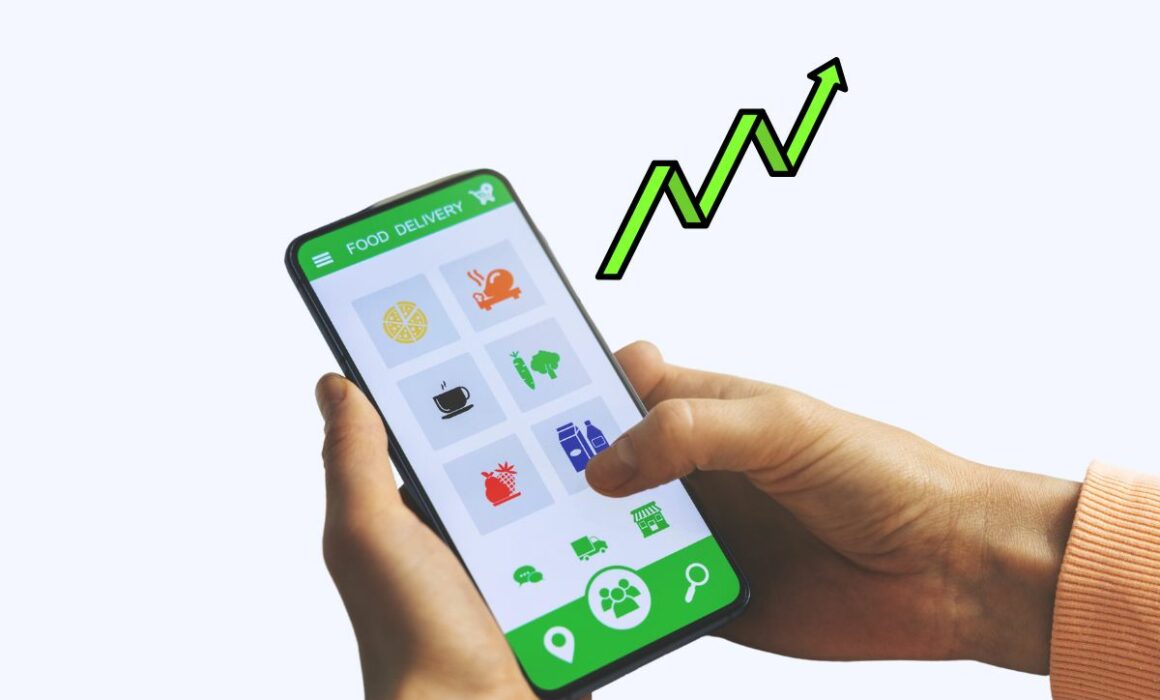How To Take Feature Adoption To New Heights
Feature adoption occurs when a user is introduced to a product’s specific features and starts using it frequently.
Features are what define a product. It’s also what makes your product stand out among competitors. This is why feature adoption is an important part of marketing a product.
The main goal of feature adoption is to showcase a product’s value and to keep users informed of newly released features.
High feature adoption rates are vital for product success. Users aware of a product’s features and use it frequently are likelier to become loyal customers. On the other hand, those who aren’t aware of your features are more likely to churn.
This article will explore feature adoption, its process, and how you can improve it.
Table of Contents
- Why is feature adoption important?
- What sets feature adoption and product adoption apart?
- The feature adoption funnel
- Feature adoption metrics to track
- How to increase feature adoption?
- Conclusion
- Machine Learning In Finance: 12 Essential Applications
- How To Create Interactive Compliance Training For Bank Employees
- How Fintech Apps Are Using Gamification To Increase User Engagement
- Top Gamification Companies for Employee & Customer Engagement
Why is feature adoption important?
High feature adoption rates mean more customers see the value of your product’s features. Once users see the value in your product, it will make them less likely to look for other brands. This makes feature adoption critical for increasing retention and decreasing churn rate.
Additionally, feature adoption is important because:
- It increases product adoption – When informed about your product features, users are likelier to become loyal customers. This will increase your product adoption rate.
- It helps analyse user behaviour – Feature adoption acts as a data-rich resource. It empowers product teams to discern users’ usage patterns. This data offers invaluable insights in guiding your team to future product development.
What sets feature adoption and product adoption apart?
The terms product adoption and feature adoption have very similar meanings and are often used interchangeably. However, these two have distinct differences and are used for different purposes.
Product adoption is a broader concept than feature adoption. Measuring product adoption means analysing the point in the user journey where customers use the product frequently and are satisfied.
On the other hand, feature adoption focuses on specific features of your product. This helps product managers figure out which features to eliminate or improve. Focusing on feature adoption is vital when a new feature is released or when a specific product feature is underused.
Both product adoption and feature adoption are critical factors for product success. Remember that they go hand in hand, and you can increase product adoption by improving feature adoption.
The feature adoption funnel
The feature adoption funnel is a 4-step guide that helps product managers measure feature adoption. It helps boost feature discovery and minimise the time it takes to reach the activation stage of the user journey.
The feature adoption funnel comprises four steps: Exposed, Activated, Used, and Used Again.
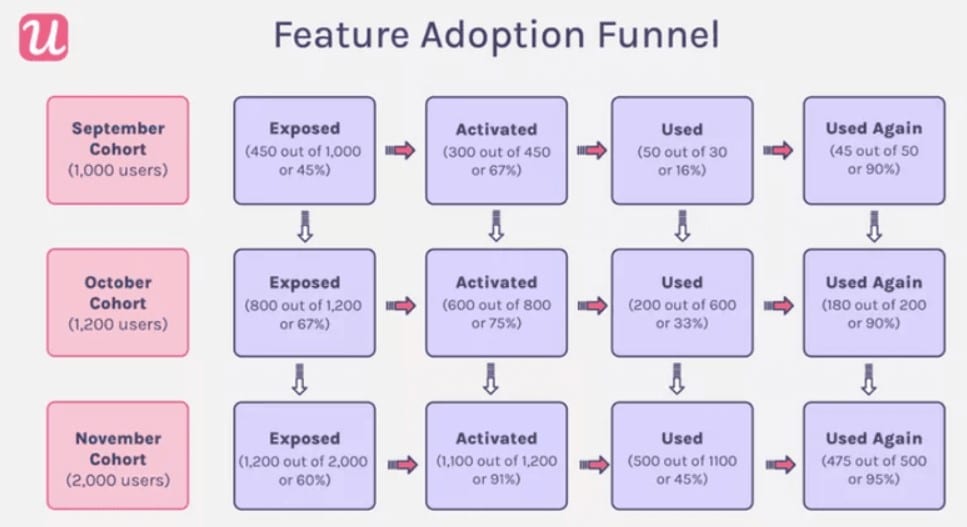
Source: userpilot
#1. Exposed
As the first step in the feature adoption funnel, “exposed” measures the number of users exposed to a feature. Knowing the percentage of people who have activated and used the feature.
To measure user exposure, compute the percentage of users that views the page where the feature is.
For example, you have 100 users that signed up in April. If 65 users out of those 100 have visited the page where the feature is, your exposure rate is 65%.
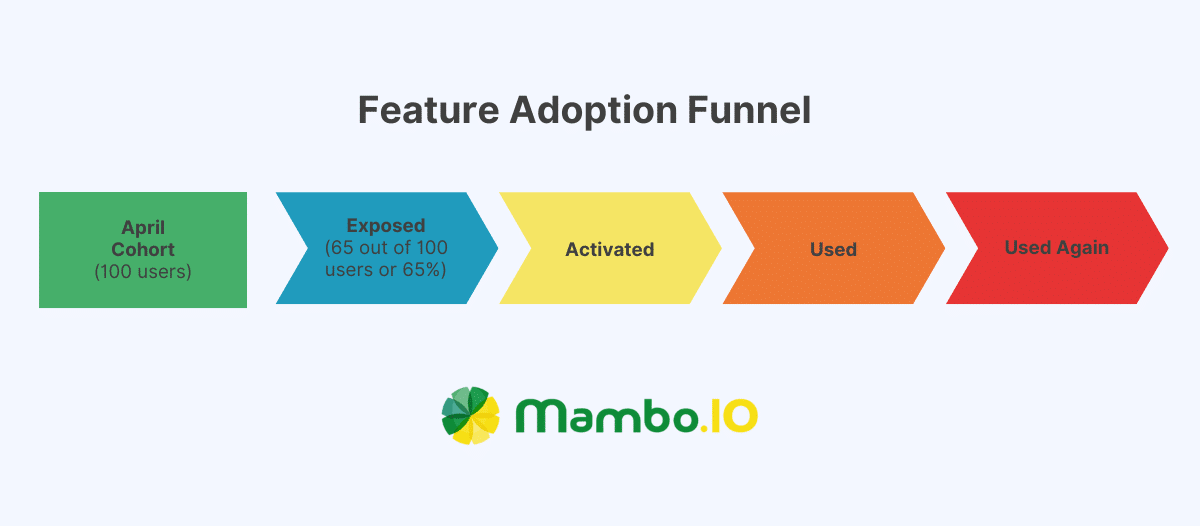
#2. Activated
In this step, you need to measure the percentage of users that have activated the feature.
Some product managers track their activation rate by looking in their database. However, this may sometimes be inaccurate because features can be disabled.
The best thing to do is measure the feature activation rate through event-based tracking. This will help you analyse all interactions between your product and the users. Create a historical record of feature activation and monitor the first time a user enables the feature.
So let’s say, for example, 50 out of 65 users exposed to the feature have activated it. This means the exposure to activated rate is 77% (50 / 65). And the activation rate for April is 50% because 50 out of 100 have successfully activated.

#3. Used
The third step of the feature adoption funnel is measuring the percentage of users who have used the feature. This will cover all users, even the ones who have only used the feature at least once.
How a feature is used varies. Some are straightforward, while others are more complex. This applies to features that simply require creating a profile vs features that require setting up an integration.
Like the previous steps, you will need a simple yes or no indication to monitor this step. Yes, if the feature is used at least once, and no, if it was never used.
So, if 20 out of 50 activated users have used the feature, your activated-to-used rate is 40%. This means that your overall “used” rate is 20%.
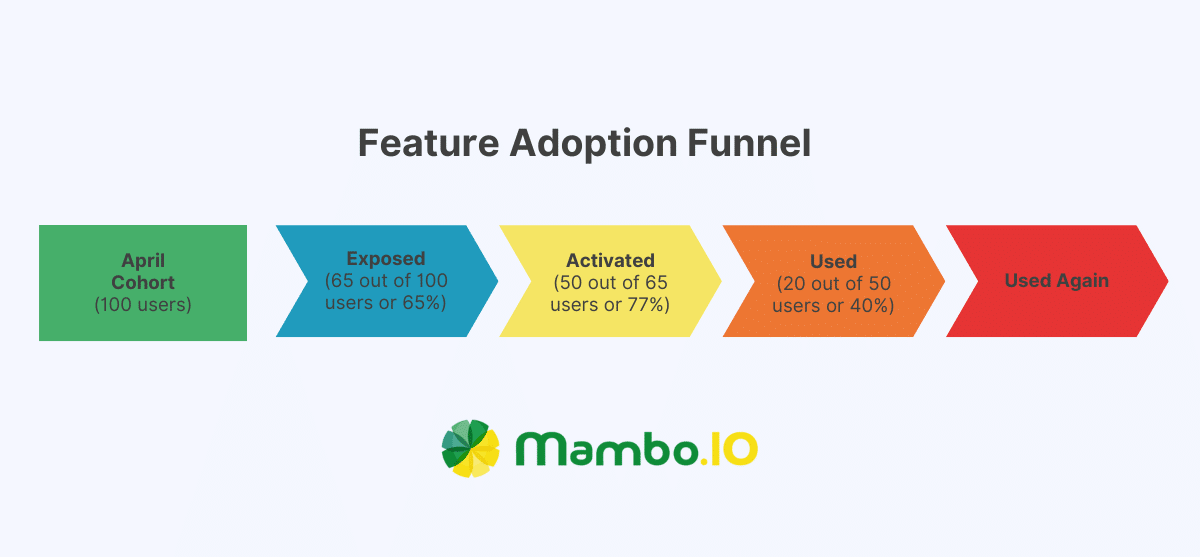
#4. Used again
In the final step, you need to measure repeated usage. The main goal of this step is to find out if your users are likely to use your product feature again. This is a critical stage because it gives you an insight into product adoption, retention, and churn rates.
This funnel stage can help mobile applications, web pages, and digital products succeed when properly monitored and analysed.
To measure your “used again” rate, you need to track the number of repeat users in a specific period.
If 15 out of 20 users who have used the feature at least once use it again, your “used again” rate will be 75% (15 / 20). Your total “used again” rate for the April cohort is 15%.
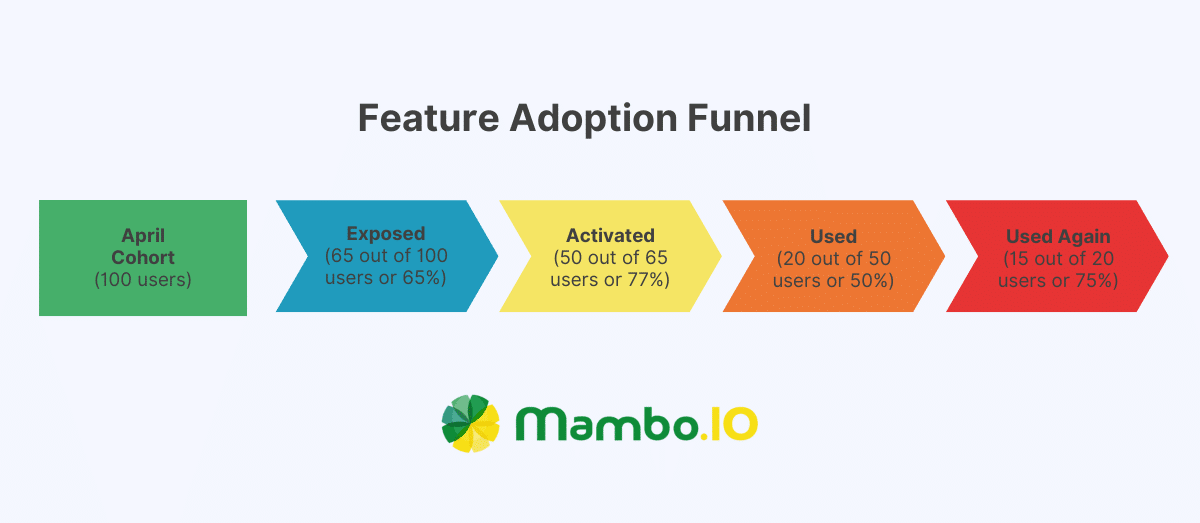
Feature adoption metrics to track
The feature adoption funnel is one way of measuring feature adoption at every customer journey stage. But there are more ways to measure this.
In addition to the feature adoption funnel, here are five metrics every product manager should track:
#1. Feature adoption rate
This KPI measures the percentage of users who have successfully adopted your feature.
Calculate this by dividing the number of feature users by the number of logins within the same duration. Then, multiply it by 100, and you will get the feature adoption rate.
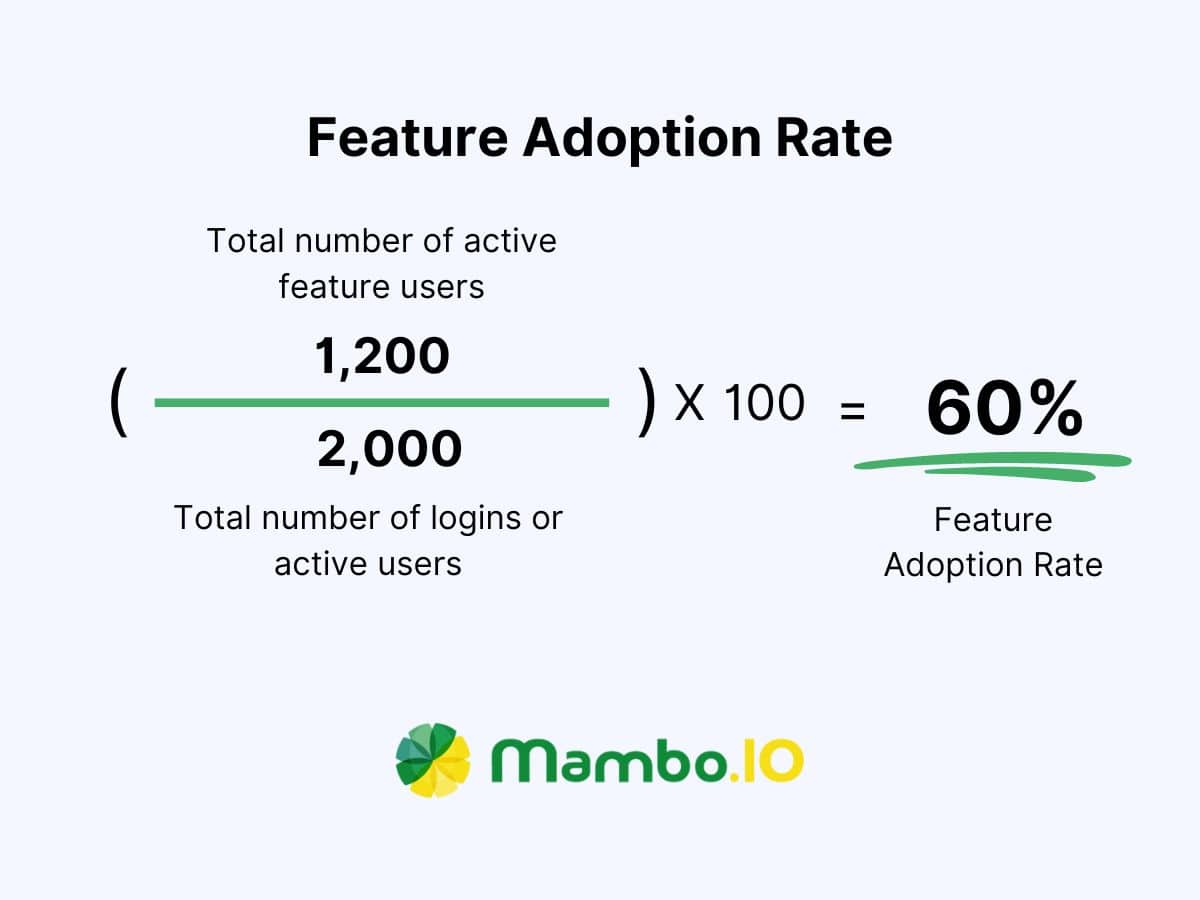
#2. Breadth of adoption
This metric shows how many users regularly engage with your feature. To calculate this metric, determine the number of users engaging with the feature over time. So if 350 out of 500 customers engage with your feature regularly, the breadth of your adoption is 70%.
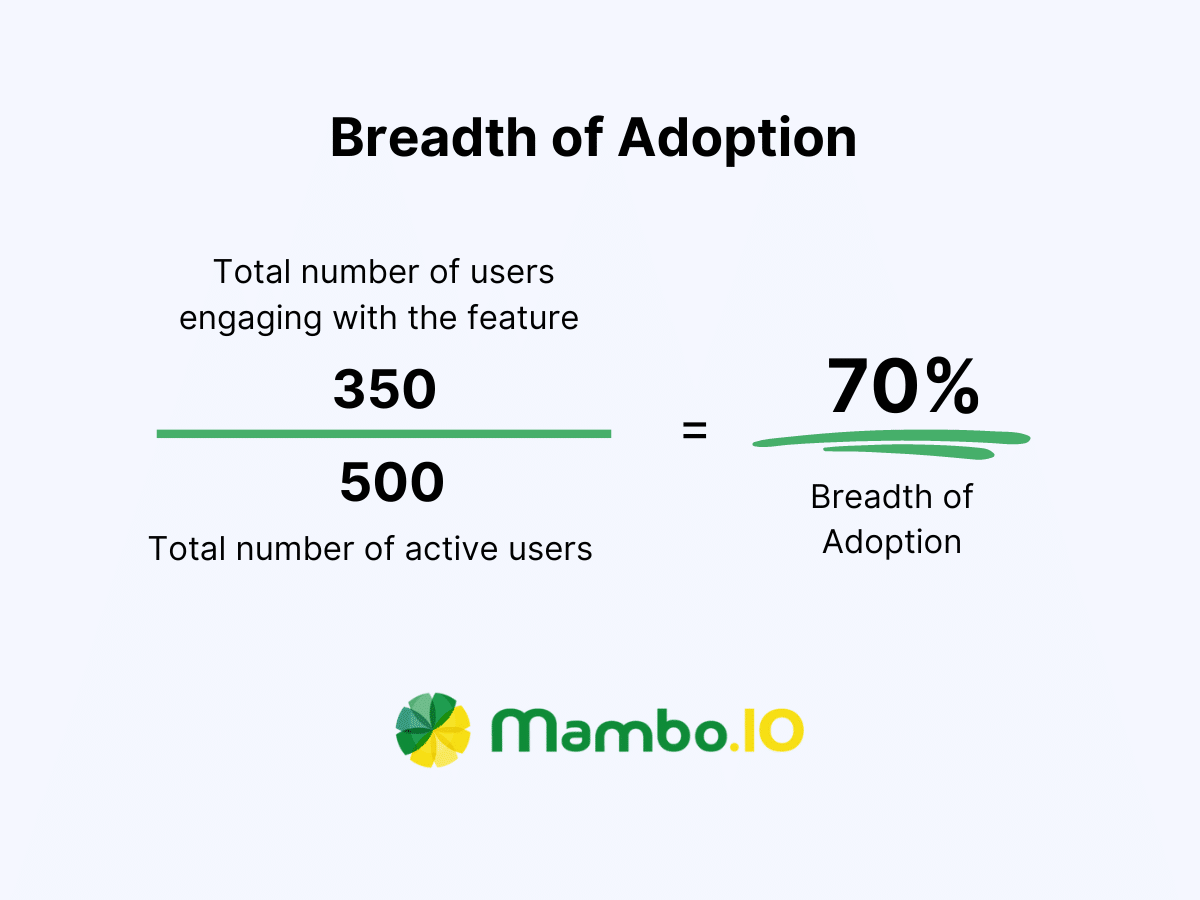
#3. Depth of adoption
The depth of adoption measures how frequently your users use your feature. This gives you an insight into your features, ease of use, effectiveness, and stickiness.
#4. Time to adopt
This KPI measures the duration between the user’s discovery of the feature and its activation. This gives you an insight into any issues the users may encounter with your product.
#5. Duration of adoption
This metric measures how long users stay engaged with a feature. It shows if the feature provides value to its users over a given time.
How to increase feature adoption?
Feature adoption is complex and is a critical part of product adoption. And while it may seem too difficult to track and improve, here are sure-fire ways to increase feature adoption.
#1. Announce in-app features effectively
Ever considered low feature adoption might be due to user unawareness? If you’re having problems with feature adoption, effective announcement is one way to resolve it.
Let your product shine as the ultimate feature announcement tool. Opt for in-app pop-up guides and tooltips to deliver feature announcements immediately. The goal is to ensure customers effortlessly find and activate the showcased feature.
Take on the new feature announcement like a significant media campaign effort. Announce a new feature through well-promoted social media content. This will catch the attention of your target audience on Facebook, Twitter, and other platforms, increasing the likelihood of exposure.
#2. Improve user onboarding experience
What sets the tone for user experience is their very first exposure to the new feature. With this in mind, it’s your job to establish the value and usefulness of your feature through user onboarding.
You can create welcome messages with tips and tutorials to clearly see what your users have in store for them.
One of the best ways to level up user onboarding is by implementing gamification strategies to make it fun and exciting.
How to use gamification to improve user onboarding?
Gamification is the application of game-like elements in a nongame environment. It’s useful in improving user onboarding and introducing new and existing features to new users.
To apply gamification, create in-app prompts encouraging users to try new features. Instead of simply showing them what to do, ask them to try and learn the feature at their own pace. You can also create an onboarding checklist so they can tick each task when they’re done.
You can also offer rewards for each milestone to add to the motivation. Celebrate each challenge with badges and points to encourage users to explore your product more.
Gamification is a fun way to engage and expose new users to a particular feature within your product. More exposure means more chances of activation.
#3. Update in-app features that help solve user problems
Everything begins with a helpful feature. Your product team must continuously update in-app features that will appeal to and provide value to your users.
Evaluate feedback and adoption rates, and avoid complex features. Always let your product team collaborate with your customer success team when updating in-app features.
That is how you yield valuable features.
Remember that no gimmicks and onboarding tricks can save an underwhelming product.
#4. Support in-app experiences through email marketing
To increase feature adoption, you need to develop a habitual user experience. You want your users to use your feature in a manner that is consistent and automatic to them. To do this, you need to reinforce feature adoption through repetition.
That’s where email marketing comes in.
Email marketing is one of the easiest ways to achieve repetition and expose your users to a new feature. By sending emails recommending users start using the new feature, they will be familiar with it and start activating it eventually.
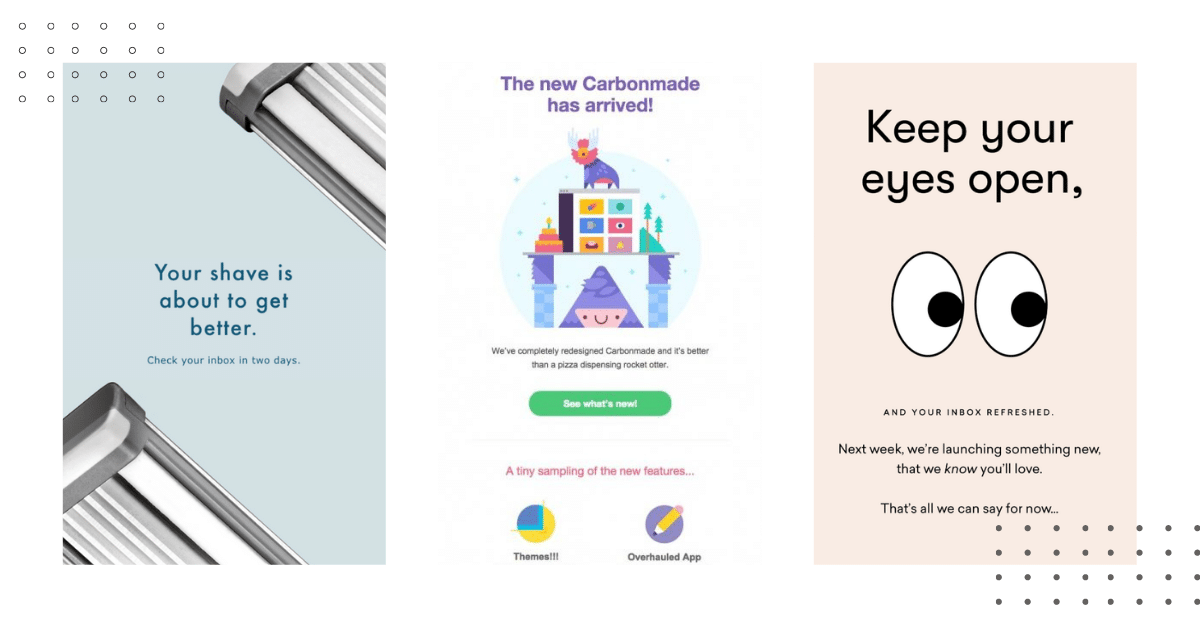
Source: chamaileon
It’s also a good idea to schedule customised emails responding to specific actions, primarily when users are engaged and receptive.
For example, you can send the first email upon installation of the new feature. You can then send a follow-up email when the user tries the feature.
#5. Improve user feedback
As a product manager, you aim to pinpoint issues within your product and feature. User feedback is the best way to achieve this because users sometimes have a broader view of your product. Understanding which features are not working for them and why they think they failed is essential.
Collect user feedback through in-app surveys, interviews, social media polls, and exit-intent questionnaires. Understand what satisfies them in a particular feature and remember that when developing new features.
The goal of user feedback is to answer the following questions:
- What prompts you to use the feature often?
- You gave the feature a week’s trial. Why did you quit using it?
- How likely are you to suggest the feature to friends on a scale of 0 to 10?
Short and straightforward questions hold the secret to actionable product feedback surveys. Listening to your users’ perspectives helps grasp feature usage decisions.
#6. Provide excellent customer support
Trying out new features can be confusing. That’s why excellent customer support should always be ready to help users whenever needed. This will also help build a trusting relationship with users, translating into loyalty.
#7. Aim for continuous improvement
Launching a new feature is just the beginning of feature adoption efforts. As a product manager, you are responsible for improving and optimising the feature. That, in addition to factoring in feature adoption rates and feedback analysis.
Familiarise yourself with your users’ expectations and behaviour. Put your user’s needs and desires first. Improve user experience with a quality feedback system. With it, you can analyse and compare the distinction between user expectations to product features.
By employing this approach, you can gain insights into your target audience and translate them into your product.
Find growth potential in every piece of feedback – good or bad. Turn negative comments into opportunities for self-improvement.
Conclusion
From beginning to end, the article aimed to explain feature adoption. What feature adoption is, its importance, and how to improve it. But, the key focus was on giving you all the tools and methods necessary to increase feature adoption.
Be mindful of the impactful features at your disposal, including those that can reshape the customer journey and influence user behaviour. Focus on proper exposure and then guide them into the feature’s activation, use, and repeated use.
Always remember that the value of a new feature is lost unless your users become aware of them. Everything starts from announcement and onboarding. Establish the value of your product from day one.
Our Mambo experts are excited to work with you to improve your user onboarding and increase feature adoption. Book a demo now!
Download your free
“Gamification Guide”
Get your PDF now and start transforming your approach to digital engagement!
Latest Posts
Machine Learning In Finance: 12 Essential Applications
The impact of machine learning on finance is significant. Thanks to this technology, financial institutions are now equipped to make efficient decisions. Through the analysis of data sets, machine learning […]
How To Create Interactive Compliance Training For Bank Employees
Banking compliance training isn’t just another task. It’s the stage where everything else performs. Banks must navigate a myriad of regulations and laws. After all, this is a trust-driven, high-stakes […]
How Fintech Apps Are Using Gamification To Increase User Engagement
Discover how gamification in fintech is revolutionizing financial engagement, making banking fun & boosting user loyalty.
